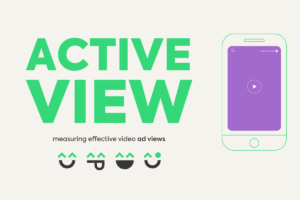The interaction rate (IR) is crucial for the success of any website, especially for medium and large publishers seeking MCM Google partnerships or exploring new ad formats. A site with a high interaction rate attracts visitors, generates engagement, and drives conversions, becoming a valuable asset in the digital world. In this article, we’ll explore how to increase your site’s interaction rate, avoid common mistakes, and fully leverage the monetization opportunities offered by Grumft, a specialist in website and app monetization.
Index
- 1 Fatal Mistakes That Sink Your Site’s Interaction Rate
- 2 Conclusion
Fatal Mistakes That Sink Your Site’s Interaction Rate
1. Irrelevant or Low-Quality Content
Dull Text and No Formatting
Imagine a book with pages and pages of dense paragraphs without images. Just thinking about it makes you sleepy! Similarly, a website with unformatted text blocks, images, or attractive visual resources will hardly hold visitors’ attention.
Unfocused Content
Is your site a buffet? If it offers a bit of everything without a clear focus, visitors will get lost and not know where to go. Define the main theme of your site and organize the content so that it revolves around it.
Outdated Content
Outdated content is like sour milk: no one wants it. Regularly review and update your texts, images, and information to keep your site fresh and relevant.
Disorganized Layout
Imagine a house with furniture thrown about haphazardly. No one would feel comfortable. A site with a confusing layout, no clear visual hierarchy, and poorly distributed elements makes navigation difficult and frustrates visitors.
Chaotic Menu
The menu of your site is like a city’s map. If it is complex, disorganized, and filled with irrelevant items, visitors will get lost and give up finding what they are looking for. Organize the menu logically and intuitively, with clear categories and well-defined subcategories.
Broken Links
Broken links are like dead ends: they lead visitors nowhere. Regularly check the links on your site to ensure they work correctly and direct visitors to the right pages.
3. Lack of Interaction and Resources
No CTAs (Calls to Action)
Imagine a restaurant without a menu. How will customers know what to order? A site without clear and compelling CTAs leaves visitors unsure of what to do and what action you expect them to take.
No Comments or Forms
Do your visitors have something to say? A site without space for comments and contact forms misses the chance to hear the audience, understand their needs, and build relationships.
Limited Resources
A site with only text and static images is like a lifeless museum. Explore resources like videos, infographics, polls, and interactive tools to make your site more dynamic and engaging.
4. Slow Loading Speed
Heavy Images
Imagine a car loaded with bricks. It will move slowly! Large, unoptimized images can make your site slow and frustrating for visitors who lack the patience to wait for everything to load.
Overloaded Server
An overloaded server is like a waiter in a crowded restaurant. They can’t serve everyone. If your server can’t handle your site’s traffic, loading times will increase, and visitors will give up.
Poorly Written Code
Imagine a computer program full of bugs. It will crash and give errors! Poorly written, unoptimized code can make your site slow and unstable, harming the user experience.
5. Neglected Search Engine Optimization (SEO)
Irrelevant Keywords
Imagine searching for “pizza” and finding results about “ice cream.” Disappointing, right? If your site is not optimized with the right keywords, visitors looking for your products or services won’t find it.
Missing or Incorrect Meta Tags
Meta tags are like store signs. They inform search engines about your site’s content. If your site’s meta tags are missing or incorrect, search engines won’t understand your content, and you’ll have fewer chances of appearing in search results.
Inadequate Site Structure
Your site’s structure is like a house’s blueprint. It needs to be clear and logical for search engines to understand how your content is organized. Use titles, subtitles, and breadcrumbs to hierarchize your site’s pages and facilitate navigation for visitors and search engine robots.
6. Poor Mobile Experience
Non-Responsive Layout
Imagine a site that looks great on a computer but becomes disorganized and unusable on a mobile device. Today, most internet access is via mobile devices, so having a responsive layout that adapts to different screens is crucial.
Tiny Elements
Imagine needing a magnifying glass to read your site’s text on a mobile device. Small texts, tiny buttons, and inaccessible menus make navigation and interaction difficult for mobile users.
Slow Loading Speed on Mobile
Mobile users’ patience is less than that of a saint. If your site takes too long to load on a mobile device, visitors will quickly give up.
7. Compromised Security
Missing SSL Certificate
Imagine making an online purchase on an unsecured site. Scary, right? An SSL certificate ensures safe browsing and protects your visitors’ data, conveying trust and credibility.
Code Vulnerabilities
Imagine a site full of security holes. A hacker’s dream! Keep your site’s code updated and free of vulnerabilities to protect your data and your visitors’ data.
Lack of Backups
Imagine losing all your site’s content due to a hacker attack or technical failure. Nightmare! Regularly back up your site to ensure you always have a secure copy of your content.
8. Poor Data Analysis
Unused Analysis Tools
Imagine driving a car without an instrument panel. You won’t know where you’re going or if the engine is working correctly! Use data analysis tools like Google Analytics to monitor your site’s traffic, visitors’ behavior, and identify improvement opportunities.
Superficial Data Analysis
Imagine looking at your site’s data and not understanding anything. What are they for? Go beyond raw numbers and conduct a deep data analysis to extract valuable insights and make strategic decisions for your business.
Data-Unsupported Actions
Imagine making business decisions without any data to support you. Lucky in the game, unlucky in life! Base your decisions on information obtained through data analysis to increase your chances of success.
Conclusion
Avoiding these fatal mistakes is the first step to increasing your site’s interaction rate and achieving your online goals. Invest in a friendly, relevant, secure, and engaging site, creating an exceptional experience for your visitors. This will drive interaction, conversions, and the success of your online business.
If you’re a medium or large publisher looking to optimize your site’s monetization with new ad formats, contact Grumft. Our expertise in website and app monetization, with tags that do not interfere with user experience, can transform your site into an engagement and revenue magnet. Count on Grumft, as we have the expertise you need.
Additional Resources
For more information on interaction rate and how to optimize it, consult the following official resources:
Contact Grumft and discover how we can help you reach new levels of success in monetizing your site.





